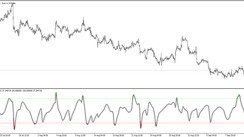Understanding Systematic Trading
Systematic trading is a style of trading that follows preestablished guidelines for making investment choices. It is quite different from discretionary trading, where decisions are made based on instinct and personal experiences, trading experiences. Professionals often prefer systematic trading as it eliminates emotional involvement and brings more objectivity to the trading activity. Simultaneously, for individual traders aiming to make their trading operations virtually automatic and limit the human factor in decision-making, systematic trading is also beneficial.
Anatomy of A Systematic Trading System
A comprehensive systematic trading system commonly encompasses the below elements:
Criteria for Entry: It involves the guidelines that dictate when to initiate a trade.
Criteria for Exit: These principles dictate when to step out of an trade.
Rules Governing Money Management: These rules establish how much capital is to be put at risk in each trade.
Risk Management Guidelines: They prescribe how to control losses, and keep them manageable.
The decisions on when to initiate or pull out of a trade are usually based on technical analysis, which leverages historical price data to pinpoint patterns that can be used to forecast future movements of price. Money management and risk management guidelines usually rely on mathematical tenets.
Suitable Assets for Systematic Trading
Systematic trading can be applied to numerous asset types, including stocks, currencies, commodities, and cryptocurrencies. Nevertheless, some assets are better aligned with systematic trading. Preference should be given to highly liquid and volatile assets, as it's easier to buy and sell liquid assets, and high volatility provides more profit opportunities.
Useful Indicators for Systematic Trading
Various technical indicators are utilised in Systematic Trading. Here are some of the most frequently used ones:
Moving averages: These are tools that simplify price data and help identify trends.
Bollinger bands: These measure volatility and help identify conditions when the asset is overbought or oversold.
Relative strength index (RSI): A momentum metric that assesses the magnitude and rate of price movements.
Stochastic oscillator: Another momentum metric that calculates a security’s price concerning its range over a recent period.
Choosing the best indicators for systematic trading depends on the asset being traded and the specific trading strategy employed.
What Experts Say
Trading community experts usually agree that systematic trading can yield profits, but they caution that it's no magic pill for getting rich quickly. Systematic trading demands discipline and a long-term focus.
Additional Systematic Trading Tips
Backtesting is critical: Prior to committing real money, backtest your system on historical data to gauge its past performance. This can reveal system weaknesses and offer a chance to make required modifications.
Use a trading simulator: This lets you trade using virtual money and gives you a feel for your trading system before you risk real money.
Start small: It's prudent to start with small stakes. This strategy helps manage your risk and prevent significant losses if your system fails.
Patience is a virtue: Systematic trading is a marathon, not a sprint. Don't expect overnight riches. Be patient and give your system time to work.





